
views
Taking Oral Temperature
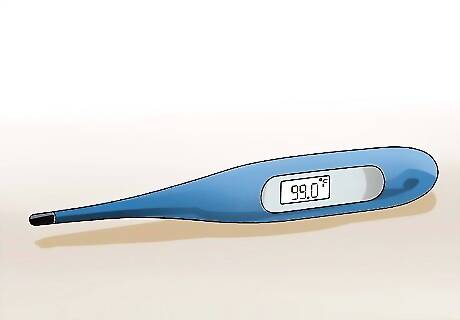
Use a multi-use or oral digital thermometer. Some digital thermometers are designed to be used either rectally, orally, or in the armpit, while others are designed to be used specifically in the mouth. Either type of thermometer will give an accurate reading. You can find digital thermometers in the drugstore. If you have an old glass thermometer, it's best to stop using it. Glass thermometers are considered unsafe now because they contain mercury, which is poisonous to the touch. If the thermometer breaks, you will have a hazardous situation.

Wait 20–30 minutes after bathing or eating. A warm bath could affect the child's body temperature, so wait a good 20 minutes to make sure you get the most accurate possible reading.

Prepare the tip of the thermometer. Clean it with rubbing alcohol soap and warm water, then rinse it with cool water and dry it thoroughly.
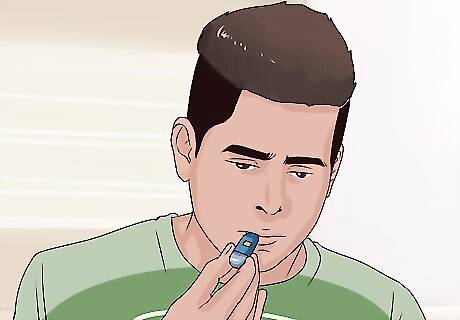
Turn on the thermometer and insert it under the tongue. Make sure the tip is completely in the mouth and under the tongue, not up near the lips. The person's tongue should completely cover the tip of the thermometer. If you're taking your child's temperature, either hold the thermometer in place or instruct your child to do so. Try to move the thermometer as little as possible. If the person is upset, fidgeting, or vomiting, take their temperature under their arm instead.
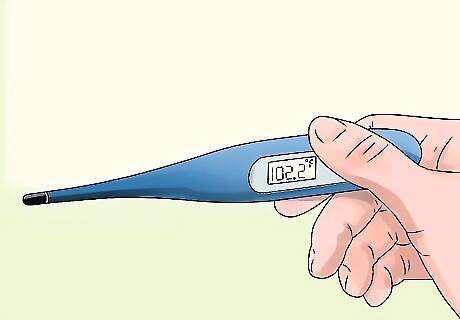
Remove the thermometer when it beeps. Look at the digital display to determine whether the person has a fever. Any temperature above 100.4 °F (38.0 °C) is considered a fever. If a baby has even a slight fever, contact your doctor. However, children and adults don't need to go to the doctor unless their temperature is over 101 °F (38 °C). You may not need to go in for a doctor's visit, but it's best to get and follow your doctor's advice.
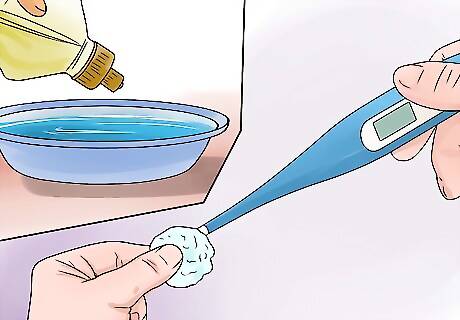
Wash the thermometer before putting it away. Use warm, soapy water and dry it thoroughly before putting it away for next time.
Taking Axillary (Armpit) Temperature
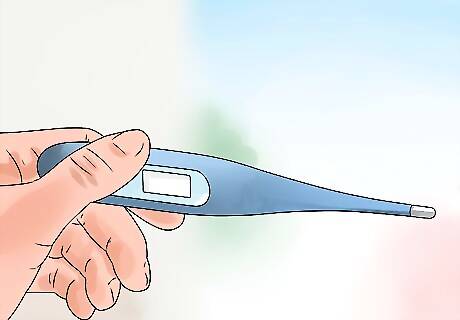
Use a multi-use digital thermometer. Look for a digital thermometer designed to be used either rectally, orally, or in the armpit. This way you can take the axillary temperature first, and if a high temperature is indicated, you can try a different method as well. It's best to dispose of old glass thermometers, if you still have one. If they break, the mercury inside them is hazardous.
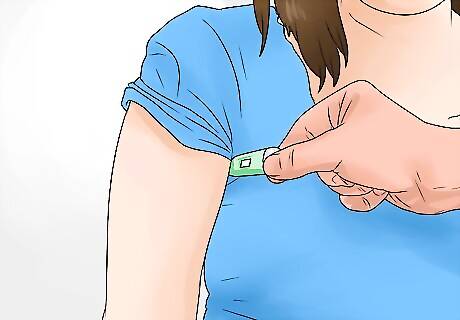
Turn on the thermometer and place it in the armpit. Lift the arm, insert the thermometer, then lower the arm so the tip of the thermometer is snug in the middle of the armpit. The entire tip should be covered.
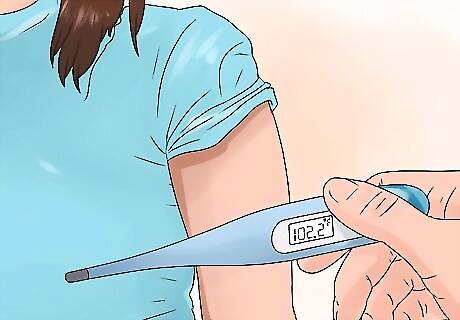
Remove the thermometer when it beeps. Look at the digital display to determine whether the person has a fever. Any temperature above 100.4 °F (38.0 °C) is considered a fever, but going to the doctor right away isn't necessary unless the fever is above a certain temperature: If your baby has any signs of fever, call the doctor for any fever. If the person with the fever is an older child or an adult, call the doctor if it's 101 °F (38 °C) or higher.
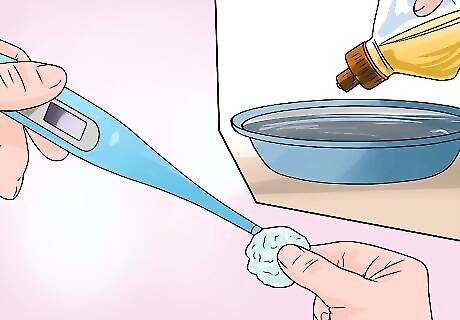
Wash the thermometer before putting it away. Use warm, soapy water and dry it thoroughly before putting it away for next time.
Taking Rectal Temperature
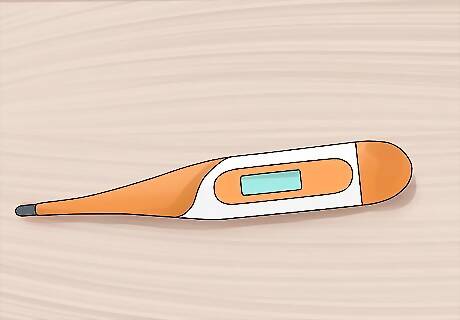
Use a multi-use or rectal digital thermometer. Some digital thermometers are designed to be used either rectally, orally, or in the armpit, while others are designed to be used specifically in the rectum. Either type of thermometer will give an accurate reading. You can find digital thermometers in the drugstore. Look for a model that has a wide handle and a tip that can't be inserted too far into the rectum. This will make the process easier and help prevent you from inserting the thermometer too far. Avoid using old glass thermometers, which are now considered unsafe. If they break, the mercury inside them is hazardous.
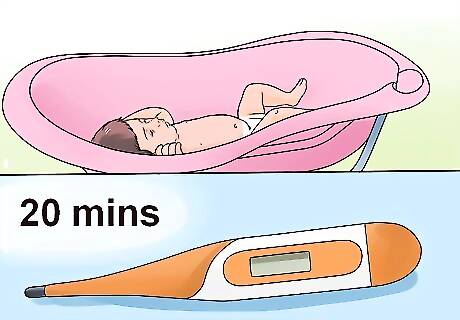
Wait 20 minutes after bathing or swaddling. A warm bath or a snug swaddling session could affect the child's body temperature, so wait a good 20 minutes to make sure you get the most accurate possible reading.
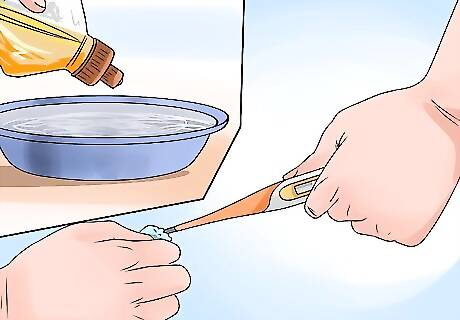
Prepare the tip of the thermometer. Clean it with rubbing alcohol soap and warm water, then rinse it with cool water and dry it thoroughly. Cover the tip with petroleum jelly to make it easier to insert.
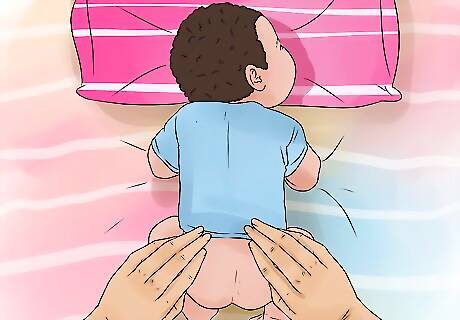
Position the child comfortably. Place the child either tummy down across your lap, or tummy up on a firm surface. Choose the position that's most comfortable for the child and makes it easiest for you to access the rectum.
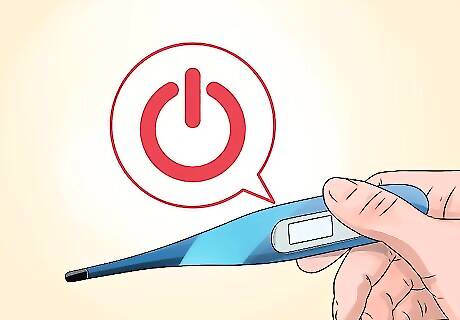
Turn on the thermometer. Most digital thermometers have a clearly labeled button you press to power on the device. Allow a moment or two for it to get set to take the temperature.
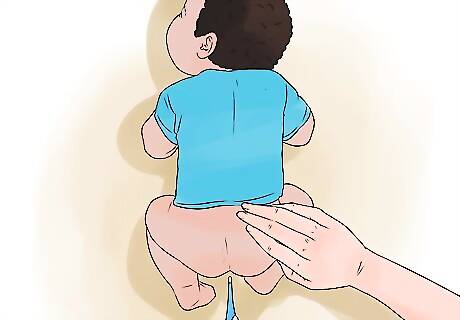
Hold the child's buttocks apart and gently insert the thermometer. Use one hand to hold the child's buttocks apart and the other to insert the thermometer about .5 inches (1.3 cm) inside. Stop if any resistance is felt. Keep the thermometer in place by holding it between your first and middle fingers. Meanwhile, keep your other hand firmly but gently on the child's bottom to prevent squirming. If your child starts squirming or becomes agitated, remove the thermometer and calm them down. Try again once the child is calm.
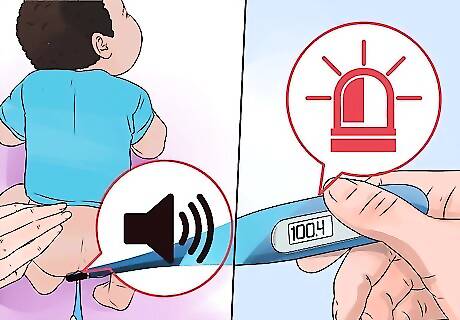
Once the beep sounds, carefully remove the thermometer. Read the thermometer to determine whether the child has a fever. A temperature of 100.4 °F (38.0 °C) or higher indicates a fever. Call the doctor if your baby has a fever 100.4 °F (38.0 °C) or higher. If the person with the fever is an older child or adult, call the doctor if it's 101 °F (38 °C) or higher.
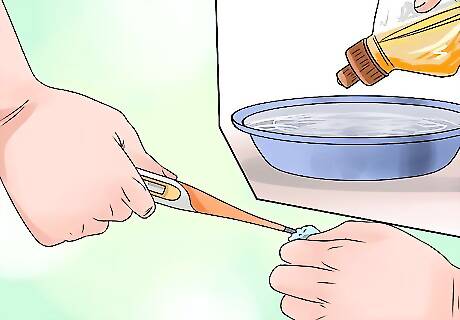
Wash the thermometer before putting it away. Use warm, soapy water as well as rubbing alcohol to cleanse the tip thoroughly.
Taking Ear Temperature
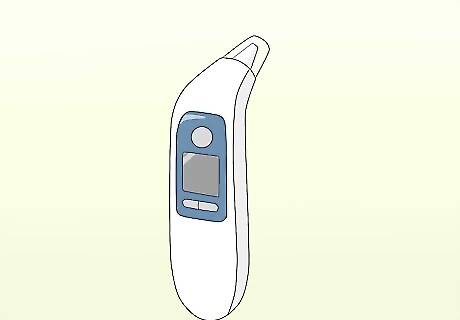
Use a digital ear thermometer. These thermometers are specifically designed for using in your ear and measure your temperature from your ear drum. Choose a thermometer that has plastic covers that go over the tip so you don’t spread any germs. Ear thermometers won’t work on infants or children younger than 6 months since their ears are too small.

Stay inside for 15 minutes before taking a reading. Hot or cold temperatures outside could give you an inaccurate reading. Before you take a temperature with an ear thermometer, come inside and wait at least 15 minutes so you get a correct reading.
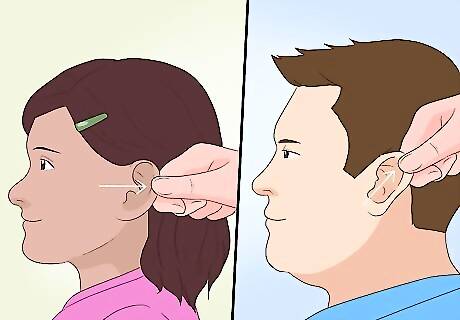
Pull your ear up and back. If you’re taking a child’s temperature just gently pull their ear straight back to widen their ear canal. If you’re taking an adult's temperature, lightly pull up before tugging it toward the back of their head. Earwax can cause an inaccurate reading, so clean your ears if they’re dirty.
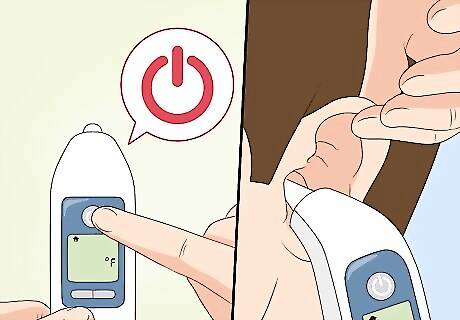
Turn on the thermometer and insert the tip in your ear. Check the instructions on your thermometer since it may have specific instructions on how to use it. Switch the thermometer on and gently place it in your ear. Don’t use any force or push hard or you might damage your eardrum.
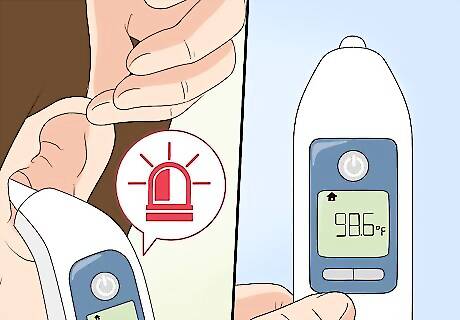
Remove the thermometer when it beeps. Follow your thermometer’s specific instructions for taking a temperature reading. You’ll usually have to hold down a button or turn on a switch. Wait for the thermometer to signal you before taking it out of your ear so you can check your reading. Wash or throw away the cover you used so you don’t contaminate anything else. Ear temperatures are usually 0.5–1°F (0.3–0.6°C) higher than an oral temperature.
Taking Forehead Temperature
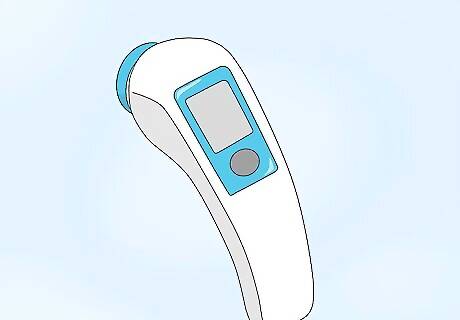
Use a digital forehead thermometer. Get a thermometer that’s specifically made for your forehead since other models won’t be as accurate. These types of thermometers are a little more expensive than standard thermometers, but you can use them on adults and infants as young as 3 months. Avoid using analog forehead strips since they aren’t as accurate.
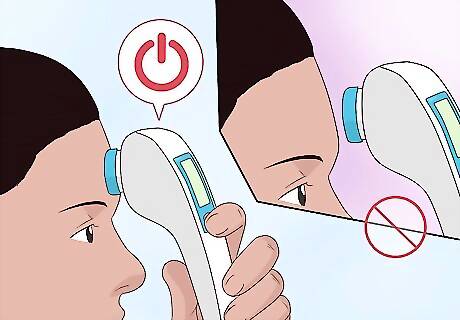
Place the thermometer’s sensor on your forehead. Turn on your thermometer and press the sensor flush on your forehead. Be careful not to lift or tilt the sensor, or else you won’t get an accurate reading. Make sure you brush your hair out of the way or take off anything that’s covering your forehead.
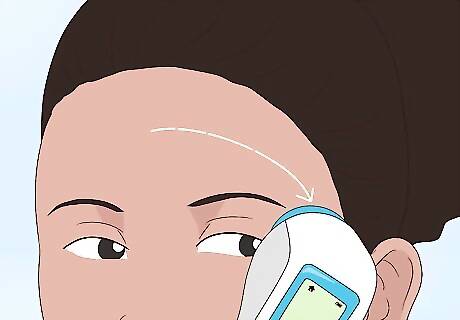
Slide the thermometer toward the top of your ear. Slowly sweep the thermometer straight across your forehead. Be careful not to lift the sensor off of your skin, or you may read an inaccurate temperature. Read the instructions on your thermometer thoroughly since you might not have to move newer models across your forehead.
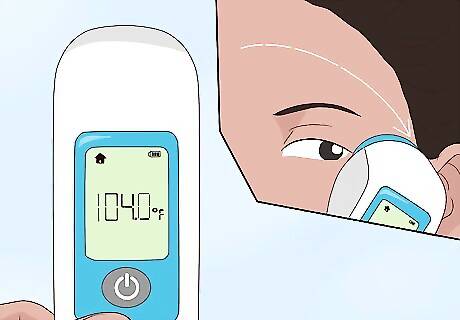
Check your temperature when you reach your hairline. After you reach your hairline, pull the thermometer off of your skin and look at the screen to find your temperature. If you’re an adult, call a doctor if your temperature is over 103 °F (39 °C). If you’re taking an infant’s temperature, talk to a pediatrician if their temperature is over 100.4 °F (38.0 °C). Forehead temperatures typically are 0.5–1°F (0.3–0.6°C) cooler than an oral temperature.


















Comments
0 comment